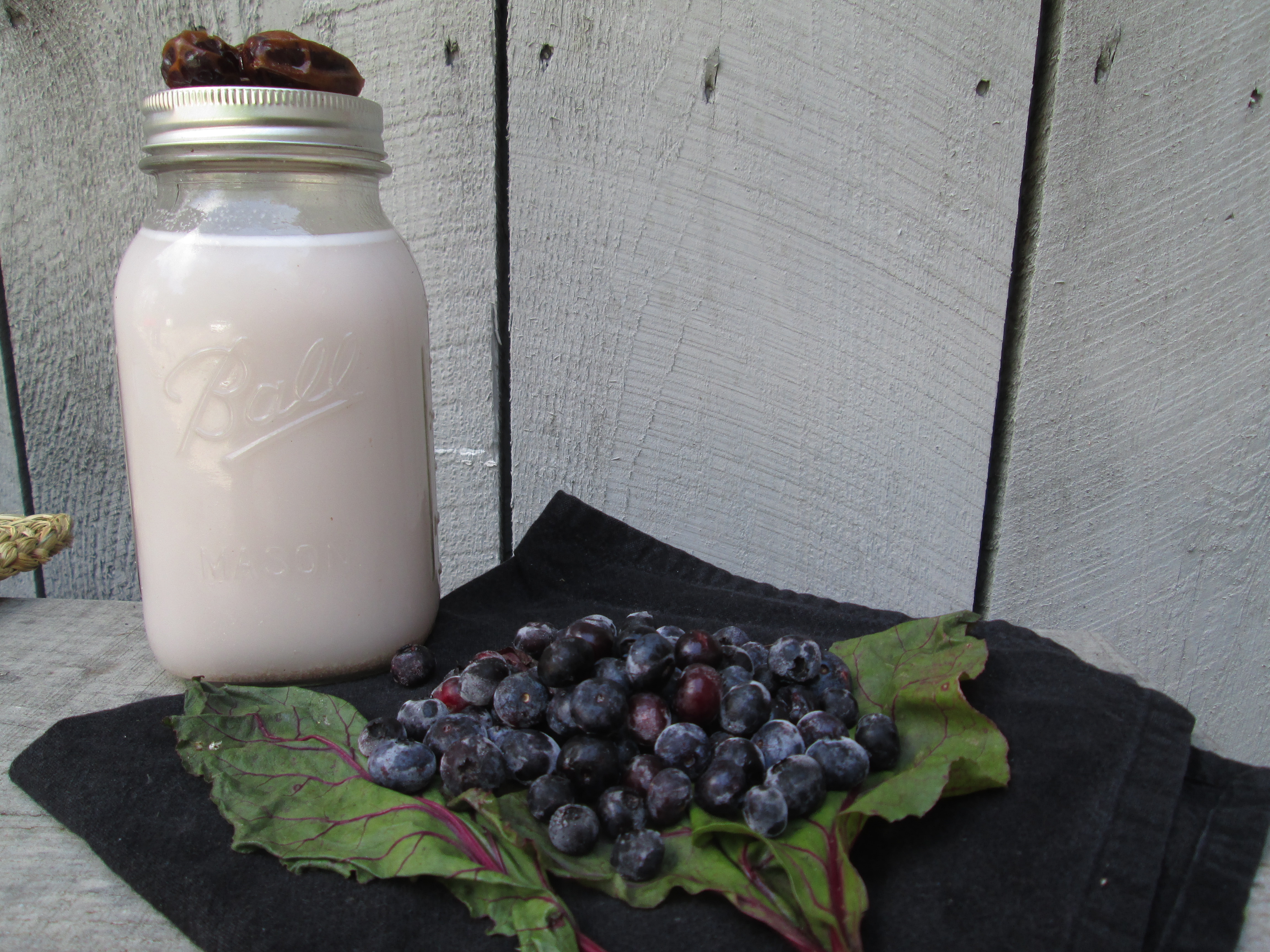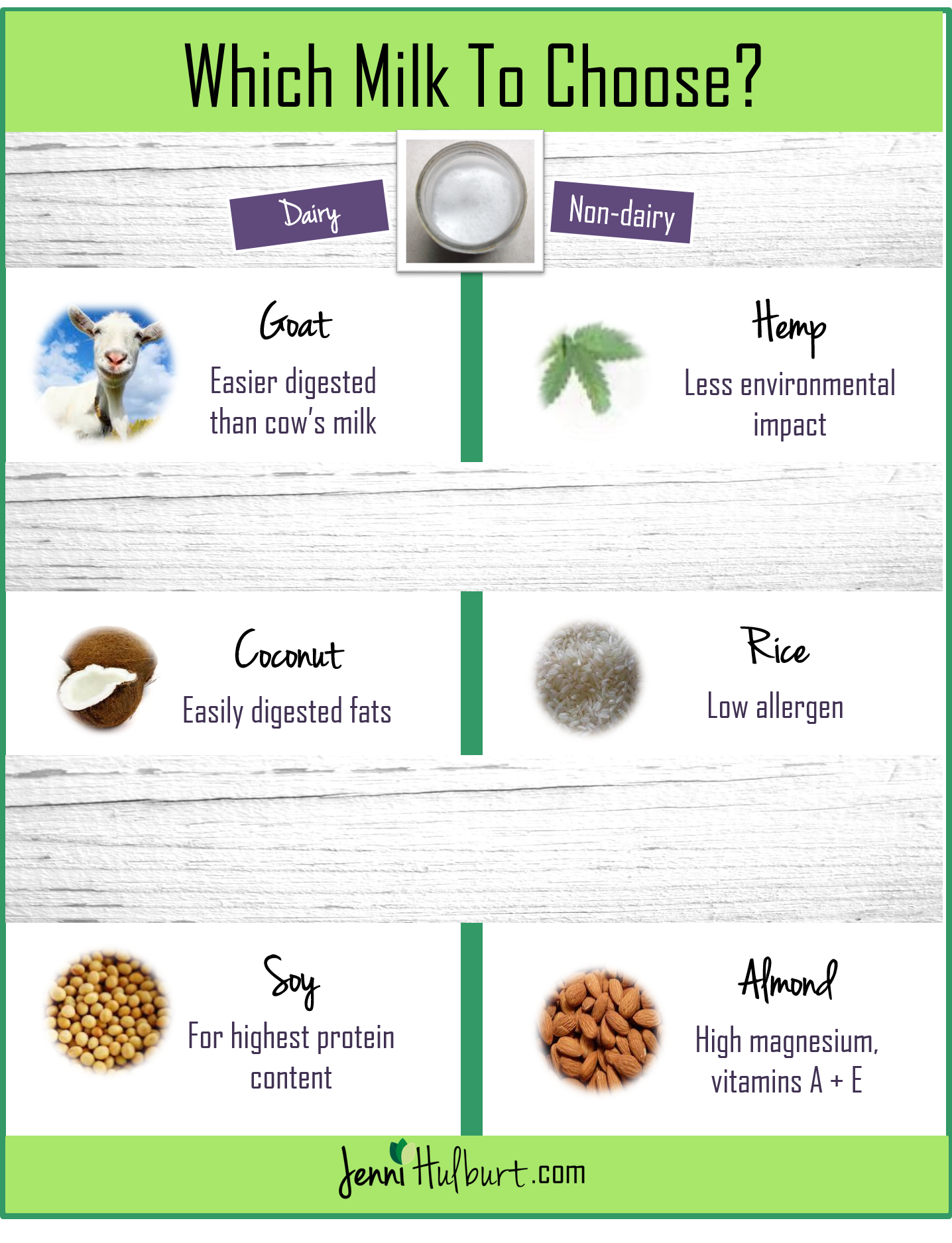
All About Milks: Which One Is Right For You?
Since then, I’ve found out I have an allergy to cow’s milk, and like many other people, I enjoy non-dairy “milks” with my granola, smoothies, in baking, and in cooking.
Whether you have an allergy to dairy milk, you follow a vegan diet, or you just simply avoid dairy and want an alternative, there are several milks available these days – so which one do you choose?
This post is all about milk – mostly the non-dairy type – so you can choose what’s best for you and navigate the milk section on your next grocery trip.
What You Need To Know
Most non-dairy beverages are lower in calcium compared to dairy milk, but many are fortified to include calcium and vitamin D. Some also contain sweetener and flavors, so read your labels because many contain a significant amount of sugar. Compare ingredients lists, nutrition facts, and brands when you’re shopping.

CLICK THE IMAGE TO PIN THIS HANDY INFOGRAPHIC + SAVE IT FOR REFERENCE.
Flavor, Processing, & Health Factor
Almond
Flavor: Nutty, somewhat creamy consistency.
How It’s Processed: Toasted almonds are ground and soaked. Homemade almond milk is simple to make, just a little more time consuming than buying it at the store. Get Whole Foods’ recipe here.
Health Factor: Contains vitamins A and E, magnesium. Low in carbohydrates and protein.
Soy
Flavor: Mild nutty flavor, creamy, and similar consistency to cow’s milk.
How It’s Processed: It’s highly processed and most likely made from genetically modified soy beans unless otherwise noted.
Health Factor: Highest protein content, B vitamins, and low glycemic index.
Hemp
Flavor: Strong, rich, nutty flavor. Creamy for smoothies and soups.
How It’s Processed: Growing hemp has a low environmental impact and hemp milk is minimally processed.
Health Factor: High in omega-3’s, iron, magnesium, and typically low allergenic.
Coconut
Flavor: Very creamy coconut flavor
How It’s Processed: Environmental impact of coconut harvesting and transportation.
Health Factor: Easily digested fats, antiviral and antifungal properties. Low allergen option.
Rice
Flavor: Sweet, neutral flavor, and thin consistency
How It’s Processed: Rice milk is made by pressing the rice through a mill stream using diffusion to strain out the pressed grains.
Health Factor: Low allergen option. Lower in nutrients unless it’s fortified, higher in carbohydrates, low fat.
Goat
Flavor: Strong flavor, similar consistency to cow’s milk
How It’s Processed: Raw or pasteurized. Goat milk is naturally homogenized. I believe the healthiest dairy milk choices are organic and the full-fat version. I don’t recommend low or non-fat versions of milk.
Health Factor: Less allergenic (less lactose), more easily and quickly digested than cow’s milk. Alkalinizing to the digestive tract. Rich in selenium, which has immune strengthening properties.
Which non-dairy milk is your favorite? Tell me in the comments below. I love hearing your ideas and experiences!
 Previous Post
Previous Post Next Post
Next Post


